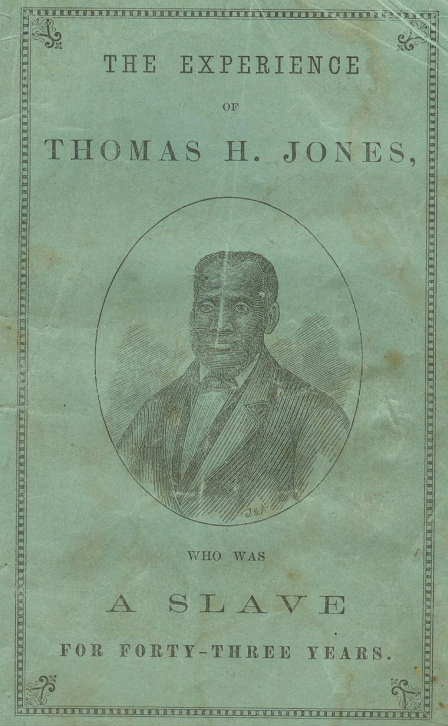
Slave narrative
The slave narrative is a type of literary genre involving the (written) autobiographical accounts of enslaved persons, particularly Africans enslaved in the Americas, though many other examples exist. Over six thousand such narratives are estimated to exist;[1] about 150 narratives were published as separate books or pamphlets. In the United States during the Great Depression (1930s), more than 2,300 additional oral histories on life during slavery were collected by writers sponsored and published by the Works Progress Administration,[2] a New Deal program. Most of the 26 audio-recorded interviews are held by the Library of Congress.[3]
Some of the earliest memoirs of captivity known in the English-speaking world were written by white Europeans and later Americans, captured and sometimes enslaved in North Africa by local Muslims, usually Barbary pirates. These were part of a broad category of "captivity narratives". Beginning in the 17th century, these included accounts by colonists and later American settlers in North America and the United States who were captured and held by Native Americans. Several well-known captivity narratives were published before the American Revolution, and they often followed forms established with the narratives of captivity in North Africa. North African accounts did not continue to appear after the Napoleonic Era; accounts from North Americans, captured by western tribes migrating west continued until the end of the 19th century.
Given the problem of international contemporary slavery in the 20th and 21st centuries, additional slave narratives are being written and published.
In comparison to North American and Caribbean slave narratives, the North African slave narratives in English were written by British and American white slaves captured (often at sea or through Barbary pirates) and enslaved in North Africa in the 18th and early 19th centuries. These narratives have a distinct form in that they highlight the "otherness" of the Muslim slave traders, whereas the African-American slave narratives often call slave traders to account as fellow Christians.
Narratives focused on the central themes of freedom and liberty which drew inspiration from the American Revolution. Since the narratives include the recurrence of themes and events, quoting, and relying heavily upon each other it is believed by scholars that the main source of information was other narratives more so than real captivities.[17] Female captives were depicted as Gothic fiction characters clinging to the hope of freedom thus more relatable to the audience.[18]
Examples include:
Women's slave narratives[edit]
Narratives by enslaved women include the memoirs of Harriet Jacobs, Mary Prince, Mattie J. Jackson, and "old Elizabeth," among others.
In her narrative, Mary Prince, a Bermuda-born woman and slave discusses her deep connection with her master's wife and the pity she felt for the wife as she witnessed the "ill-treatment" the wife suffered at the hands of her husband.[22] Prince was taught to read by Moravian missionaries.[23] Literacy, however, was not a common theme for all enslaved women. The life story of "old Elizabeth" was transcribed from her oral account at the age of 97.[24]
As slavery has been practised all over the world for millennia, some narratives cover places and times other than these main two. One example is the account given by John R. Jewitt, an English armourer enslaved for years by Maquinna of the Nootka people in the Pacific Northwest. The Canadian Encyclopedia calls his memoir a "classic of captivity literature"[25] and it is a rich source of information about the indigenous people of Vancouver Island.
Maria ter Meetelen (1704 in Amsterdam – fl. 1751), was a Dutch writer of an autobiography. Her biography is considered to be a valuable witness statement of the life of a former slave (1748).
Contemporary slave narratives[edit]
Nonfiction[edit]
A contemporary slave narrative is a recent memoir written by a former slave, or ghost-written on their behalf. Modern areas of the world in which slavery occurs include the Sudan. Escape from Slavery: The True Story of My Ten Years in Captivity – and My Journey to Freedom in America (2003) by Francis Bok and Edward Tivnan, and Slave by Mende Nazer and Damien Lewis, describe from slavery experiences in the Sudan.
"Another Slave Narrative", a film series, was launched by filmmaker Michelle Jackson on December 18, 2016.[27] Jackson, inspired by an interview with a former slave, decided to present the stories of previously enslaved people in a series of short films. A cast of 22 actors of mixed sex, race, and age, read out individual slaves' interviews from the Slave Narrative Collection which includes more than 2,300 interviews conducted from 1936–38. Jackson's aim is to document every single fate and hence approach the taboo of slavery, and keep the memory of the slaves alive through these videos.
Fictional[edit]
The Underground Railroad by National Book Award winner Colson Whitehead takes place in an alternative version of the 19th century. Cora, a slave on a cotton farm in Georgia escapes via the Underground Railroad.[28] The novel was well received. It was said to possess "the chilling, matter-of-fact power of the slave narratives collected by the Federal Writers' Project in the 1930s, with echoes of Toni Morrison's Beloved" and could be considered as a modern-tale fictional slave narrative.[29]
A neo-slave narrative — a term coined by Ishmael Reed while working on his 1976 novel Flight to Canada and used by him in a 1984 interview[30] — is a modern fictional work set in the slavery era by contemporary authors or substantially concerned with depicting the experience or the effects of enslavement in the New World.[31] The works are largely classified as novels, but may pertain to poetical works as well. The renaissance of the postmodern slave narratives in the 20th century was a means to deal retrospectively with slavery, and to give a fictional account of historical facts from the first-person perspective.[32]
Examples include: